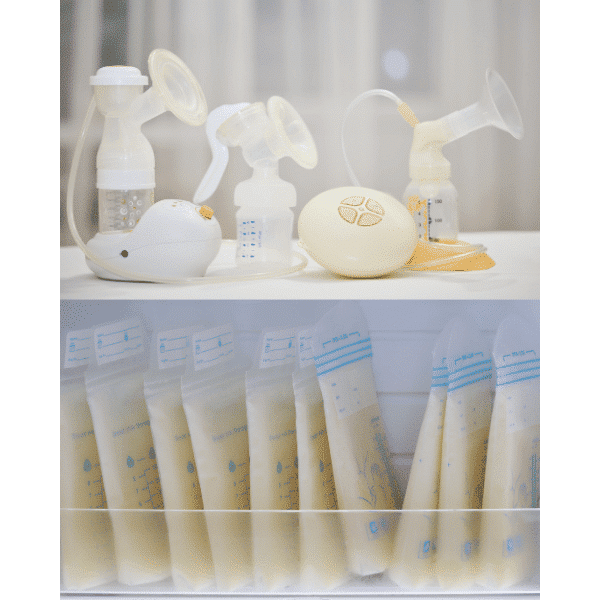Smooth Sailing: Successfully Transition Your Breastfed Baby to a Bottle in 2025

Returning to work after maternity leave can be an emotional journey, and one of the most significant challenges is helping to adjust your breastfed baby to a bottle feeding. This transition doesn’t have to be stressful. With the right approach, patience, and preparation, you can make this change a positive experience for both you and your little one.
Understanding the Challenges
Babies who are exclusively breastfed may initially resist bottle feeding due to:
- Different nipple texture and flow
- Unfamiliar feeding method
- Comfort and bonding associated with breastfeeding
Choosing the Right Bottle
Not all bottles are created equal. When selecting a bottle for a breastfed baby, consider:
1. Bottle Nipple Design
- Look for wide-based nipples that mimic the breast shape
- Choose slow-flow nipples to match breastfeeding pace
- Opt for soft, flexible silicone nipples
2. Recommended Bottle Brands
- Dr. Brown’s Natural Flow
- Tommee Tippee Closer to Nature
- Lansinoh mOmma (my favorite)
- Medela Calma
With a gradual sloped nipple, and great flow rate, this is my preferred bottle for babies who switch between the breast and bottle.
Timing and Strategy: When to Start Practicing
Begin Early
- Start bottle introduction 2-3 weeks before returning to work
- This allows time for adjustment without added stress
- Try offering the bottle before 8 weeks, which is when their sucking reflex disappears
Practice Techniques
- Have someone other than mom offer the first bottles
- Start with one bottle per day
- Offer just a 2 ounce bottle to start, add to it if you have success
- Choose a time when baby is calm but slightly hungry
- Avoid introducing during major life changes or illness
The Gradual Transition Process
Week 1-2: Introduction and Exploration
- Offer 1-2 bottles of expressed breast milk
- Let baby explore the bottle during non-critical feeding times
- Be patient and supportive- don’t stress your baby out during feeding of you won’t have success
Week 3-4: Consistent Practice
- Increase bottle frequency
- Experiment with different feeding positions
- Allow other caregivers to practice feeding
Tips for Success on Getting your Breastfed Baby to a Bottle

Milk Temperature and Preparation
- Warm milk to body temperature
- Use freshly expressed breast milk
- Test milk temperature on your wrist
Emotional Support
- Stay calm and positive
- Don’t force the bottle
- Be flexible and open to baby’s cues
Pumping and Milk Storage
- Establish a consistent pumping schedule
- Pump anytime a bottle is given to maintain supply
- Store milk properly
- Label milk with date and time
- For more complete information, check out this link https://justaskjennp.com/breastmilk-storage-guidelines/
What to Do If Your Baby Resists
Troubleshooting Strategies
- Try different bottle nipples
- Experiment with feeding positions
- Have partner or caregiver feed
- Avoid forcing or causing stress
- Be patient and relaxed and keep sessions short if no success
- Let baby explore the bottle nipple without milk
- Distract your baby while offering the bottle- dance with your baby, have a toy to watch or play with, sing to your little one
Understanding Oral Motor Skills and Feeding When Transitioning a Breastfed Baby to a Bottle
Common Oral Motor Challenges
- Difficulty creating proper suction
- Tongue thrust reflex interfering with bottle acceptance
- Poor lip seal around bottle nipple
- Difficulty coordinating suck-swallow-breathe pattern
- Weak jaw strength affecting feeding efficiency
When to Consult a Speech Therapist
Speech-Language Pathologists (SLPs) specializing in infant feeding can help with:
- Assessing oral motor strength and coordination
- Identifying structural issues affecting feeding
- Developing targeted exercises to improve feeding skills
- Teaching proper positioning techniques
- Recommending specialized feeding equipment
Signs Your Baby May Need Professional Support
- Excessive drooling during feeding
- Frequent gagging or coughing while feeding
- Difficulty transitioning between breast and bottle
- Extended feeding times
- Poor weight gain despite adequate milk intake
Speech Therapy Interventions
- Oral motor exercises to strengthen feeding muscles
- Techniques to improve lip seal and tongue position
- Specialized bottle nipple recommendations
- Parent training for proper feeding techniques
- Regular monitoring of progress and skill development
When to Seek Help
- Consult a lactation consultant
- Speech therapists can help with oral exercises if needed
- Discuss with pediatrician if persistent issues arise
Final Thoughts
Remember, every baby is unique. The transition for a breastfed baby to a bottle is a journey of patience, love, and adaptation. Trust your instincts, stay positive, and give yourself and your baby grace during this process.
For more in-depth tips, check out this link https://www.rachelobrienibclc.com/blog/what-to-do-when-your-breastfed-baby-wont-take-a-bottle-introducing-a-bottle-part-3/
Disclaimer: Always consult with your pediatrician or a lactation specialist for personalized advice tailored to your specific situation.


